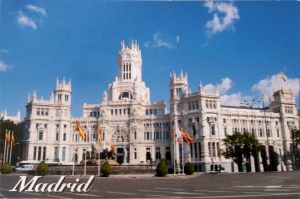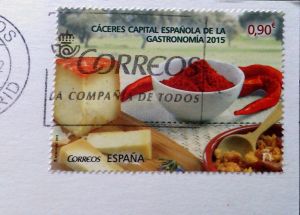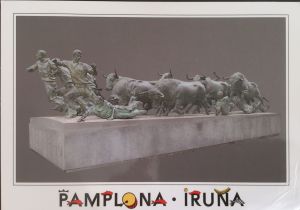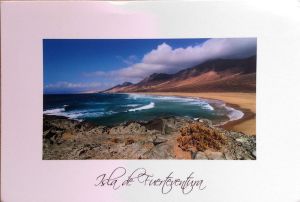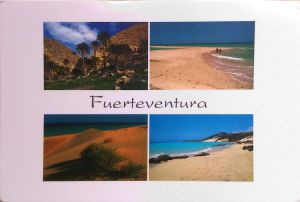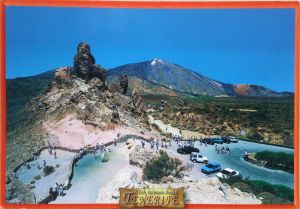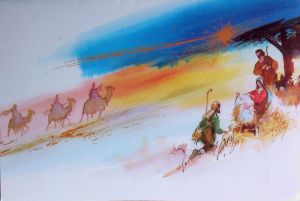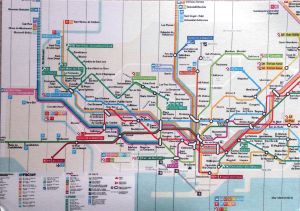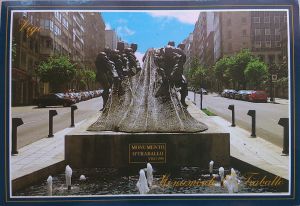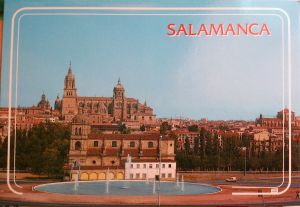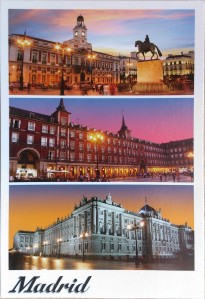 Another lovely postcard from my pen pal Katharina. 🙂 It pictures the Puerta del Sol, Plaza Mayor and Palacio Real.
Another lovely postcard from my pen pal Katharina. 🙂 It pictures the Puerta del Sol, Plaza Mayor and Palacio Real.
The Puerta del Sol (Spanish for “Gate of the Sun”) is one of the best known and busiest places in Madrid. This is the centre (Km 0) of the radial network of Spanish roads. The square also contains the famous clock whose bells mark the traditional eating of the Twelve Grapes and the beginning of a new year. The New Year’s celebration has been broadcast live on national television since December 31, 1962.
The Plaza Mayor was built during Philip III’s reign (1598–1621) and is a central plaza in the city of Madrid, Spain. It is located only a few Spanish blocks away from another famous plaza, the Puerta del Sol. The Plaza Mayor is rectangular in shape, measuring 129 m × 94 m, and is surrounded by three-story residential buildings having 237 balconies facing the Plaza. It has a total of nine entranceways. The Casa de la Panadería (Bakery House), serving municipal and cultural functions, dominates the Plaza Mayor.
The Palacio Real de Madrid (literally: Royal Palace of Madrid) is the official residence of the Spanish Royal Family at the city of Madrid, but is only used for state ceremonies. King Felipe VI and the Royal Family do not reside in the palace, choosing instead the more modest Palacio de la Zarzuela on the outskirts of Madrid. The palace is owned by the Spanish State and administered by the Patrimonio Nacional, a public agency of the Ministry of the Presidency.
